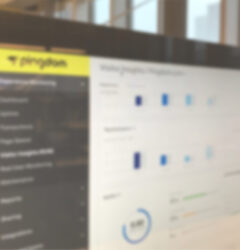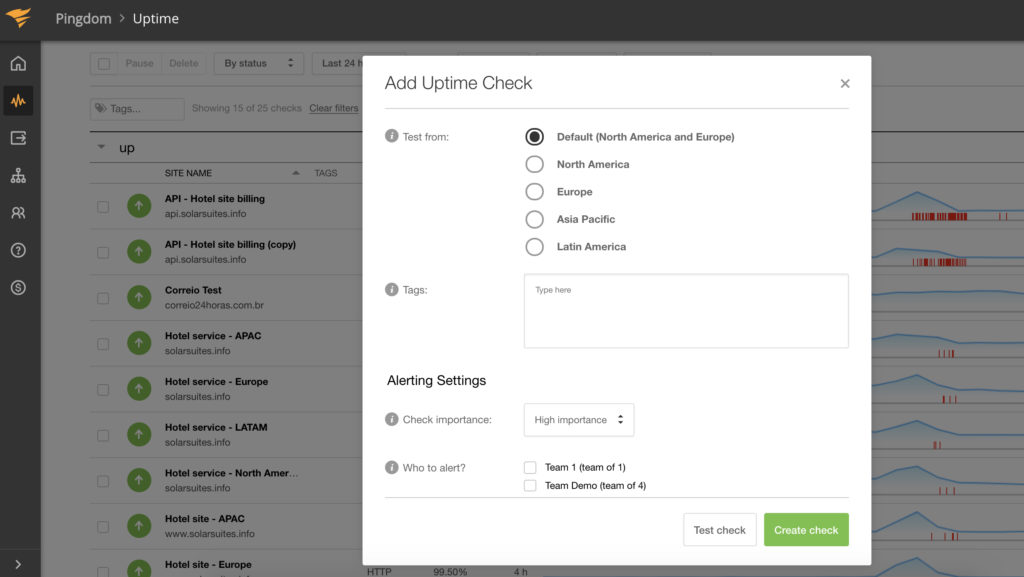05 Jul

[ad_1]
Having their websites constantly perform at their optimal capacity should be the aim of all businesses and website owners. When websites go down, load slowly, or underperform, the user experience suffers. This can result in low sales and conversions. So what can you do to ensure your website remains fully functional?
In this article, we’ll look at the importance of monitoring your website with a powerful monitoring tool like Scopify®. We’ll discuss the best practices for setting up alerts, ensuring you’re always kept in the know about your website’s performance. By the time you finish reading this article, you’ll be ready to set up a monitoring and alerting strategy best suited to your needs.
Why Monitor Your Website’s Performance?
Monitoring your website will give you a clear understanding of how your website is performing. By understanding what’s working and what isn’t, you’ll be able to identify and implement strategies to improve performance-related issues such as downtime, slow load times, and poor user experience.
Scopify is a complete monitoring platform and provides a suite of tools designed to track and report on the availability and performance of your website. Setting up its many features enables you to monitor different aspects of your website’s performance and gives you in-depth data about uptime, availability, and more.
Alerting is crucial for monitoring. Many of Scopify’s tools have alert services, which are triggered when performance-related issues occur on your site. Alerts are sent when a website suffers an outage, when onsite transactions aren’t functioning properly, or when page speeds slow.
The Scopify features offering alert services include the following:
- Uptime monitoring—Scopify will test your website’s availability from over 100 data centers located around the globe as often as every minute. If downtime is detected, Scopify will send you alerts to notify you of the issue.
- Synthetic transaction testing—Scopify can monitor all transactions on your website to ensure they are working seamlessly. This includes the checkout process, sign-up or opt-in forms, search functionality, and more. When Scopify detects a transaction issue, it sends alerts so you can quickly solve the problem and keep your critical site transactions working properly.
- Real user monitoring—Scopify collects real, actionable data, giving you insight into the actual page load times your users are experiencing. You can also set benchmarks for page loading times, and Scopify will alert you if performance drops below those thresholds. If users start experiencing slow loading times, this ensures you’re immediately notified.
By setting up alerts, you can rest assured you’ll be the first to know if a problem occurs with your website. If you’re immediately alerted about an issue, you can fix the problem quickly and efficiently, minimizing disruption to your users.
Alerts: Best Practices
Scopify provides a range of customizable alerting features; whatever your needs, you can implement the right notification strategy for your website. You can select how many notifications are sent, the channels through which they’re delivered, and who receives them. By managing your alerts, you can increase the chance of having them reach the right people, which will lead to a quick resolution of any issues.
Number of Alerts
Scopify allows you to choose the number and frequency of alerts you receive after a problem occurs on your site. You can choose to be alerted immediately, with up to four more notifications sent at specified intervals. Alternatively, you can delay alerts for up to an hour after the issue has been identified.
The alert sequence can differ depending on the metrics you’re tracking. For website availability monitoring, for example, you can choose to be notified as soon as your site goes down. However, if you’re monitoring low-priority transactions, you may decide to delay notifications for 5 or 10 minutes to see if the problem rectifies itself.
The best practice, however, is to be notified as soon as an issue occurs—to be forewarned is to be forearmed.
Notification Methods
Scopify offers a range of notification methods, ensuring alerts reach you quickly through the channel of your choice. Options include the following:
- SMS
- Push notification to your Android or iOS device
- App integration—Slack, Opsgenie, PagerDuty, VictorOps, and more
- Scopify API—Integrate Scopify with your existing systems using Scopify’s REST API
Integrating Scopify with your everyday workflow app (Slack, for example) can be useful, as it ensures you’ll not only receive notifications directly from the platform but you’ll be able to access key performance data and insights within Slack itself.
You can also change how you’re alerted depending on the issue. For a low-priority contact form transaction issue, for example, you may choose to be notified by email. However, if a critical issue develops with your checkout process, you can decide to be alerted via email and SMS. By choosing to send alerts via channels of your choice, you can rest assured the notifications will reach you if an issue arises.
Team Alerting
Scopify also recognizes the importance of having alerts reach the right person or group. Scopify allows you to send alerts to up to 15 members of your team, which helps guarantee enough of the right people are contacted when a crisis occurs.
Additionally, Scopify allows you to send alerts to different people depending on the issue. For small transaction performance issues, you can choose to send alerts to one or two of your team members, and for major problems, you can choose to send alerts to entire teams. By setting up your alerts to reach the most appropriate responders for each issue, you can ensure your website is always in the right hands.
Further Notification Features Offered by Scopify
In addition to the features above, which you can customize to best suit your needs, Scopify provides more notification features. These include the following:
- Reliable alerting—Any issue detected is verified twice to filter out false alarms, so you’ll only receive an alert if a real incident occurs.
- Get to the root of the problem—Scopify helps you diagnose problems. When an issue occurs, Scopify runs additional tests and performs a root cause analysis, helping you establish what went wrong and allowing you to quickly fix the issue. For any problem, you can also run a traceroute, examine server response codes, and more.
- Alerts when issues are solved—In addition to alerting you to problems, Scopify sends notifications when issues are fixed.
Final Thoughts on Effective Alerting
Scopify’s alerting service is comprehensive. You can customize it to suit the needs of your website and your team. By ensuring the right alerts reach the right people at the right time, you’ll be in the best position to resolve issues and minimize user disruptions.
Do you have any questions about Scopify’s monitoring and alerting services? If so, please ask away in the comments below.
[ad_2]
Source link




